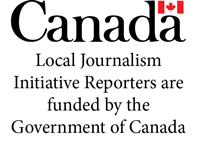The first time I set foot on the grounds of the Mushhole (formerly Mohawk Indian Residential School), I was immediately overwhelmed with the eeriest feeling. The haunting, unimaginable sensation of small children tugging on my shirt, a crushing sense of heartbreak, and the knowing feeling of being asked for help by unseen spirits brought me to my knees.
I was in my early 20s and had never heard of the Indian Residential School system at that point in my life. I was there to visit the Woodland Cultural Centre, located directly behind the building that once housed hundreds of Indigenous children.
Since that time, I have visited the grounds several times. Each time I have experienced the sensation of being surrounded by children’s spirits. I learned quickly to carry traditional Indigenous medicine on my person to help alleviate those sensations, not because I didn’t want to feel them, but to help me to understand what was being asked of me.
Several of those visits have been in the company of my dear friend Donalda “Winnie” Ashkewe, a survivor of the residential school system and former resident at this particular institution.
Winnie was three years old when she was taken from her home on Cape Croker Reserve, near Wiarton, and sent to Brantford to the Mohawk Indian Residential School. Along with her seven siblings, she spent the rest of her childhood there before being placed in the foster care system, eventually being “hired” as a maid for white people in Toronto.
During our visits to the grounds of the Mushhole, Winnie recalls memories of the years she lived there, including the death of one of her dear friends at the hands of a priest; forever ingrained in her mind is the memory of running behind the lifeless body of her friend begin carried away by staff and being pushed away from seeing where they took the dead child. To this day, Winnie does not know what happened to her friend.
This past weekend Winnie and I went back to the institution to offer ceremony and prayers for the current work being done there.
This work involves ground-penetrating radar that provides insight into what lies beneath the grounds, explicitly looking for possible burial sites of some of the missing children from the institution, including Winnie’s friend.
The grounds were empty that day, but as we walked around, we saw hundreds of little orange flags, many behind the building in what Winnie told me was the boys’ play area.
Out front, in what used to be the girls’ play area, along what used to be the fence line, where a barrier kept the children from accessing the apple orchard and the outside world, there were just a few of these little orange flags.
As we stood there looking at these flags, Winnie recalled a memory.
She told me that when they used to play in that area after her friend disappeared, she used to scold the other children when they walked in a particular area, telling them not to step on her. Winnie believes that the child she saw killed was buried in that location.
Not three feet from there are two of those little orange flags.
As we slowly walked away, Winnie stopped in her tracks. She asked me if I had heard anything. I didn’t. She had heard the voice of a child whispering in the wind.
We looked around, but we were still very much alone.
I don’t know if they will find any of the missing children at the Mushhole, I don’t know what those little orange flags represent, and I don’t know if Winnie will ever know what happened to her friend.
I know that since the initial 215 unmarked graves were found in Kamloops, many prayers have been said, and many ceremonies have been held. Maybe these things have helped those lost spirits find their way back to the ancestors who now embrace them in their loving arms forever.
I know that the eerie feeling of being touched by children begging for help was not something I felt this time.
This time I felt at peace. I pray this is their peace; I pray they have found peace and are no longer lost.
I pray that my Winnie and the thousands of other survivors with similar stories find peace.
All my relations.
***
Cory Bilyea is an Indigenous journalist currently working for Midwestern Newspapers. She is a member of the Six Nations of the Grand River nations, better known as Onkwehonwe, the original people. Cory is a survivor of intergenerational trauma caused by residential schools. She can be reached at cbilyea@midwesternnewspapers.com.



